This review was provided for free, but OHM did provide a temporary demo bike and accessories for me to test. My goal is to be transparent and unbiased with you, this video and writeup are not meant to be an endorsement of OHM products. I welcome your corrections, additions, and feedback in the comments below, and the OHM electric bike forums.
Observations:
- OHM has been around since 2005, which is a very long time in the electric bike space. Their products are focused, and skew towards high quality. All models now use Shimano drive systems, which are recognized for being light weight, efficient, and reliable.
- I reviewed the original OHM Quest in 2020, and now the company has three versions of the Quest 2. What’s covered below is the SUV model, which is the mid-level offering. For the extra money, the base Quest 2 has a smaller battery, narrower tires, 100mm travel fork vs. 120mm. The Quest 2 SUV has Boost spacing, a higher capacity battery pack, and the nicer air fork. The Quest 2 Pro has everything the SUV does, but also gets electronic Di2 shifting and 11 speed vs. 10.
Pros:
- The bike looks better than ever and is feature complete. It has sturdy tubular alloy fenders that got wider to cover the high volume 2.4″ wide tires, the integrated rear rack offers 10% higher lateral strength than normal bolt-on racks and can support 55lbs (25kg) of weight including most child carriers, the integrated lights are brighter than average and positioned very well. Notice the double LED rear light and stem mounted headlight that is below the stem so you have plenty of handlebar space for mounting a phone or other accessory. I love the locking Ergon grips, Ergon saddle, and quality magnesium pedals from Wellgo.
- While the bike is only available in high-step, note the sloped top tube for lower stand over height. I love that it’s being made in three frame sizes, to provide better fit for a range of riders AND that OHM specs different cranks, handlebar, and stem depending on the size.
- OHM is a very authentic ebike-only brand that has been around for longer than almost every single other company I’ve been covering. They provide excellent customer support, offer a solid warranty, and only work with the best components. I love the attention to detail such as two bottle cages, internally routed cables, and battery lock position high on the left vs. low and exposed.
- I asked the founder what this particular model was designed for, and he said it’s meant for trekking or touring, but works well for city and light trail riding as well. I see it as an excellent commuting platform because of the fenders, rear rack, and lights. I expect that it will get better than average range because of the efficient Shimano mid-drive motor and high capacity battery pack.
- The RST F1RST air suspension fork is way above average and feels very smooth. The air pressure is adjustable to suit your body and gear weight, there’s lockout adjust, and also rebound. This is a Boost fork with wider 110mm hub spacing up front that provides a sturdier spoke bracing angle. It uses a rigid 15mm thru-axle vs. a standard 9mm axle with skewer… it’s very trail worthy. Since the fenders and rear rack are so sturdy, you don’t hear them rattling around or feel as vulnerable when riding on rough terrain as you might with a light-duty commuter.
- The bike got heavier than the Quest 1 due to the larger battery and burlier fork and tires… but the tires offer reflective sidewalls, extremely high puncture protection, and higher volume for stability and comfort. The larger surface area feels more stable, and should offer decent traction on gravel and dirt, even though the tread is more slick for quieter efficient on-road use.
- The brakes are excellent, also specced by Shimano, with large 180mm rotors front and rear. This larger rotor size provides a better mechanical advantage and cooling properties. They went with quad piston calipers for increased surface area and stronger grab. Both levers offer adjustable reach to suit a range of hand sizes, which compliments the three frame sizes.
- I love the Ergon saddle, Ergon locking grips, and magnesium Wellgo pedals. I think they offer noticeable improvements in comfort and the 30.9mm rigid post is an excellent candidate for upgrading to a suspension post. The OHM Quest 2 that I was test riding did have a fancy Kinekt suspension post added to showcase this. Comfort is a big deal when riding far and over varied terrain. The combination of tough tires, nice suspension, and premium touch points make this a worth adventure long-distance electric bike.
- The cargo options that OHM offers are extensive and high quality. They have an unofficial partnership with Two Wheel Gear that has awesome panniers that convert into backpacks. They also sell a full range of RackTime baskets and buckets and trunk bags which we showcase in the video review. These click onto the rear rack very easily, and some can even lock! The sealed plastic box is almost like what you’d find on a motorcycle or moped and can fit a helmet inside!
- The Shimano motor controller measures pedal cadence, pedal torque, and rear wheel speed for a smooth natural feel… and the rear wheel speed sensor is built into the disc brake mount vs. a spoke. This makes it and the rear wheel more durable and balanced. It’s a small detail that I loved to see. The wheelset is very nice and features black hubs, spokes, rims, and reinforcement eyelets to reduce rim cracking on heavy hits and when truing the wheels.
- The Shimano EP8 motor is excellent. Not only does it offer more power and torque (85nm now, on par with Bosch and other leaders), but it’s very light, compact, and fairly quiet. It provides high RPM pedal support and I trust that it will be durable like previous Shimano hardware I’ve reviewed.
- Powering the motor, display, and lights is a high capacity battery pack that can be charged on or off the frame. I love that they increased the capacity from the prior generation and stuck with the hidden internal design. The battery charger is one of the fastest I’ve seen, offering 5.6 Amp vs. a standard 2 Amp and occasional 4 Amp from competing brands.
- To really care for this and other lithium-ion packs, I have heard that storing them in a cool dry location vs. extreme heat or cold will extend the number of charge cycles. Try to keep it about 50% full when not using for long periods so you won’t stress the cells, and try not to let it run down to zero. This is all easier to do with a removable pack.
- Both the motor and battery pack are positioned about as low and center as possible. The battery comes out of the bottom of the downtube vs. being bolted on top. It’s not as easy to get on and off, but the balance and positioning factor is as good as you can get right now. They both blend into the black frame and the bike looks stealthy in my opinion.
- Since this is a more active mid-drive model, I’m glad that they chose a high-end drivetrain. The Shimano Deore 11-speed is well suited to off-road use, and even includes a clutch for keeping the chain tight. The trigger shifters offer two-way high lever (so you can use your right pointer finger or right thumb) and three-step low lever. It’s my favorite groupset, apart from the even fancier Deore XT, XTR and similar derivatives from Shimano.
- Protecting the chainring is a thick aluminum alloy bash guard that will help protect your pant leg and keep the chain from dropping outward. There’s no inner guard, but the narrow-wide chainring helps to reduce drops and pairs nicely with the clutch I mentioned on the Shimano derailleur. There’s also a clear sticker slap guard on the right chain stay to help protect the paint if you encounter extreme terrain.
Cons:
- The plastic battery cover is very well done, in my opinion. It’s stiffer than many others, has a nice rubber seal around the edge, and connects very securely. However, it does not lock to the bike and could be removed if left at a bike rack. Replacement should be fairly easy given that this design is shared across many models in the OHM line.
- The charge port for the battery is located very low near the left crank arm, so you have to bend down to plug it in and the cord could be snagged more easily. To charge the battery off the bike, you need a dongle adapter piece that is easy to forget or lose.
- This is a little gripe that I have with many mid-drive ebike systems: when you pedal backwards, the chainring does not cycle. The crank arms just spin, which could make servicing the drivetrain more difficult if you don’t have access to a bike stand. Furthermore, there’s actually not much resistance, so if you slip while pedaling the crank could come back around and whack your shin. This is on Shimano, as I noticed many other drive systems have added some resistance.
- I like the display, but it’s a bit more basic than the other Shimano offerings that have larger removable screens, independent button pads, and deep settings menus. There’s no USB charging port and I’m not sure it’s compatible with the Bluetooth E-Tube apps from Shimano.
- When turning on the bike, you have to press the silver circular button on the side of the downtube vs. having one built into the display button pad itself. This requires some reaching down if you forget to turn it on before mounting the bike, but is fairly minor because OHM positioned it fairly well.
- The battery charger is very fast, but weighs a bit more and is physically larger than average. As mentioned before, it also has that dongle adapter that is easy to forget or lose but is necessary if you park the bike at a rack and bring the battery inside your house or place of work for charging and safe keeping.
- The locking core and keyset used for this electric bike are the ABUS Amparo, which is their more basic model. There are no options for getting a lock that uses the same keyset like on the ABUS Plus Code models.
- OHM sells mostly online these days, which requires some unpacking and assembly. The good news is that you can visit a handful of shops to demo their product, or visit their headquarters in North Vancouver if you live in British Columbia Canada.
- The bike is feature complete, available in three sizes with scaled hardware, and very well made… but the price is higher than average. The bike also got several pounds heavier than the previous generation due to wider Boost hub spacing for the fork, higher volume tires with moto-inspired tread, and the higher capacity battery pack.
- The new lights they chose are super bright, positioned well, and look nice, but the headlight does not have a side cutout for higher visibility from different angles. Thankfully the reflective tires help a lot.

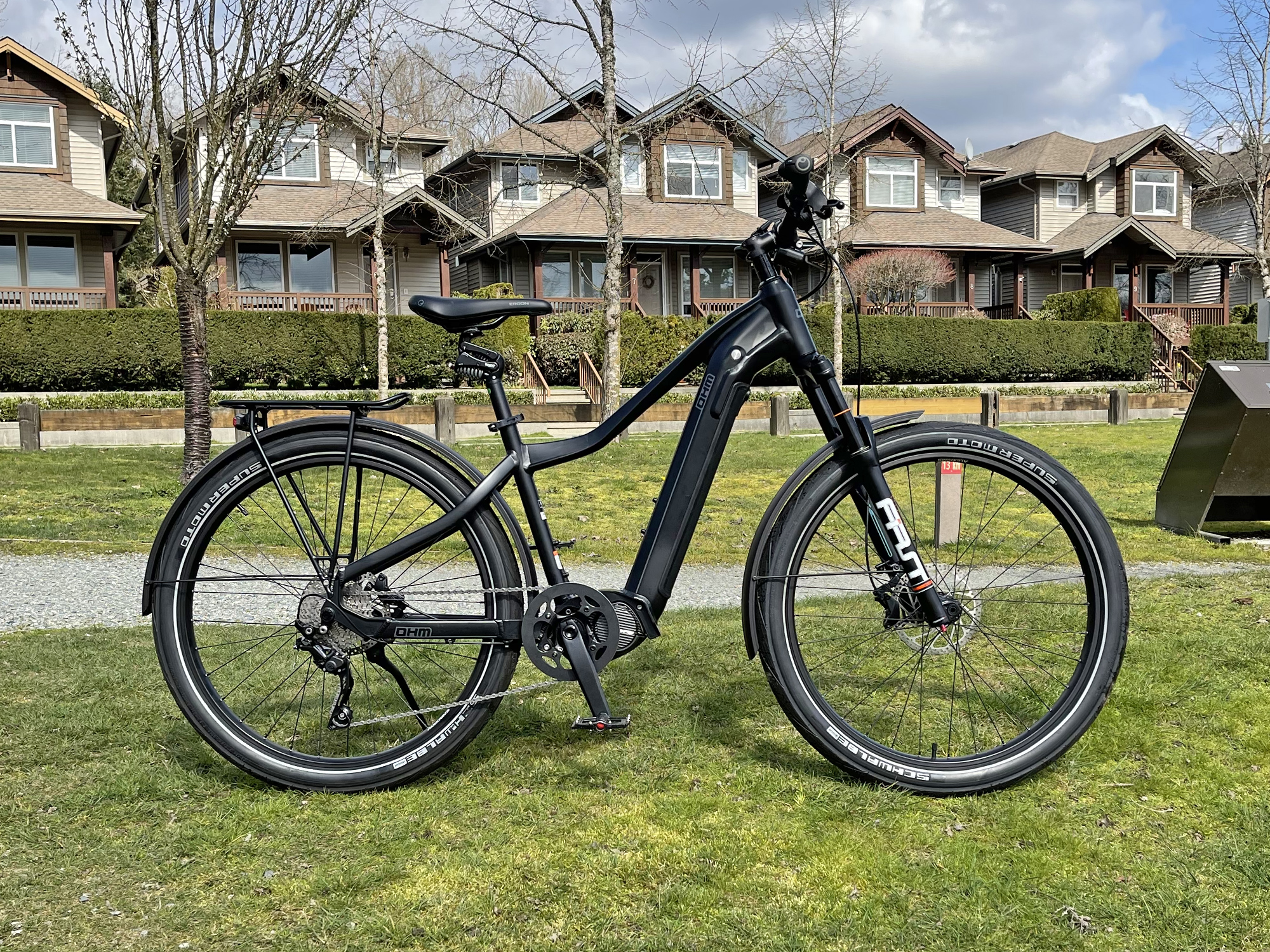

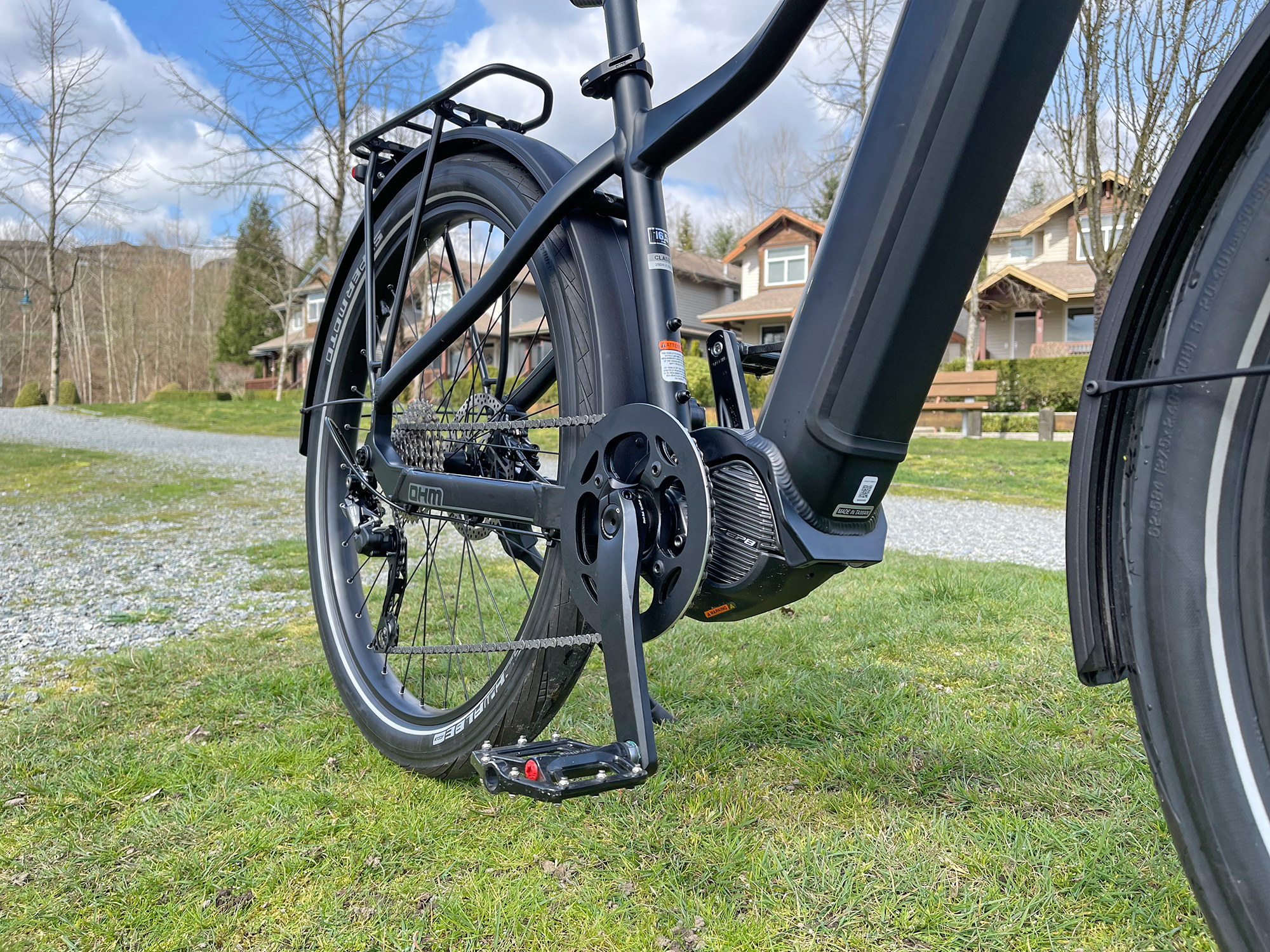
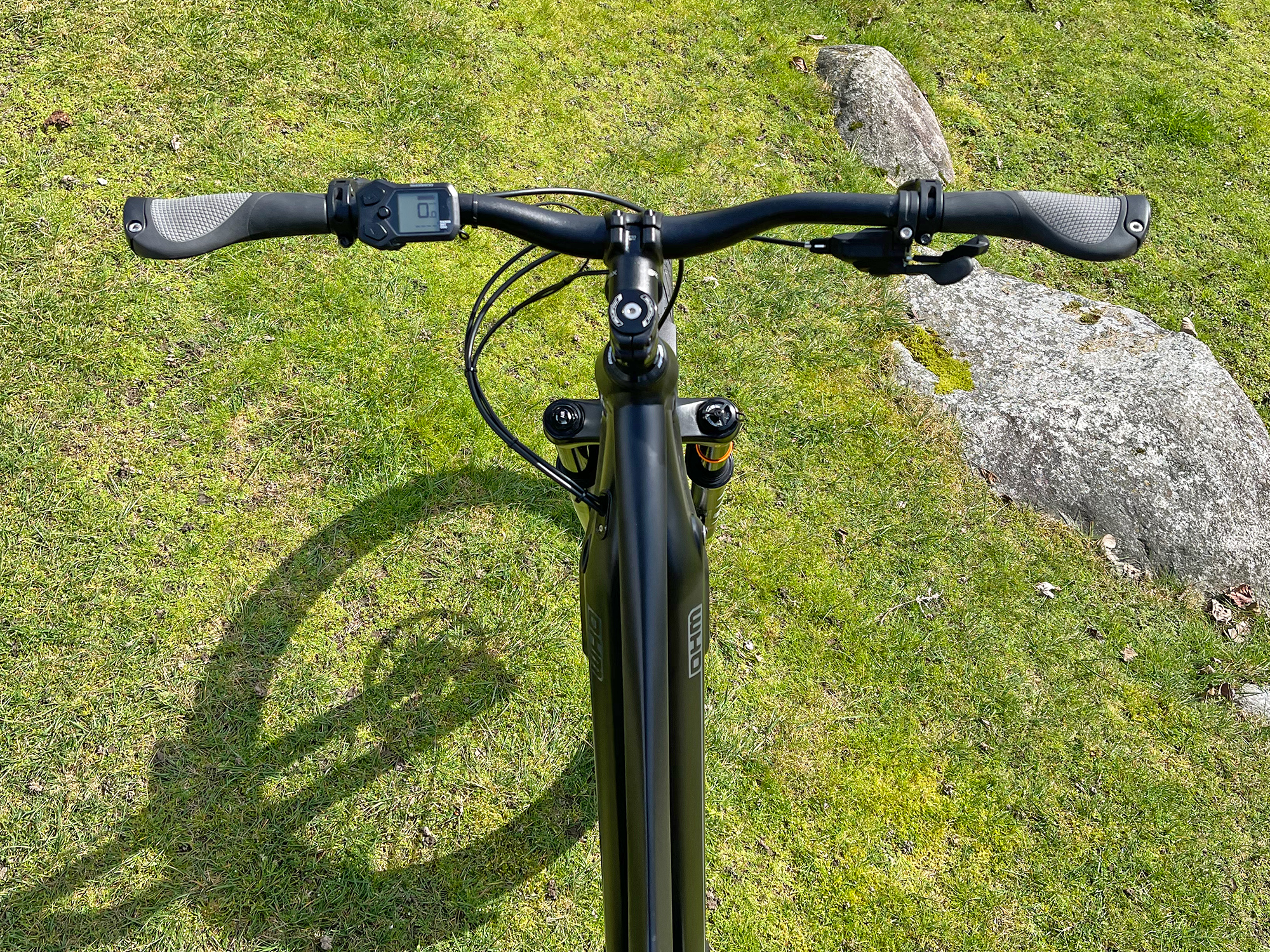
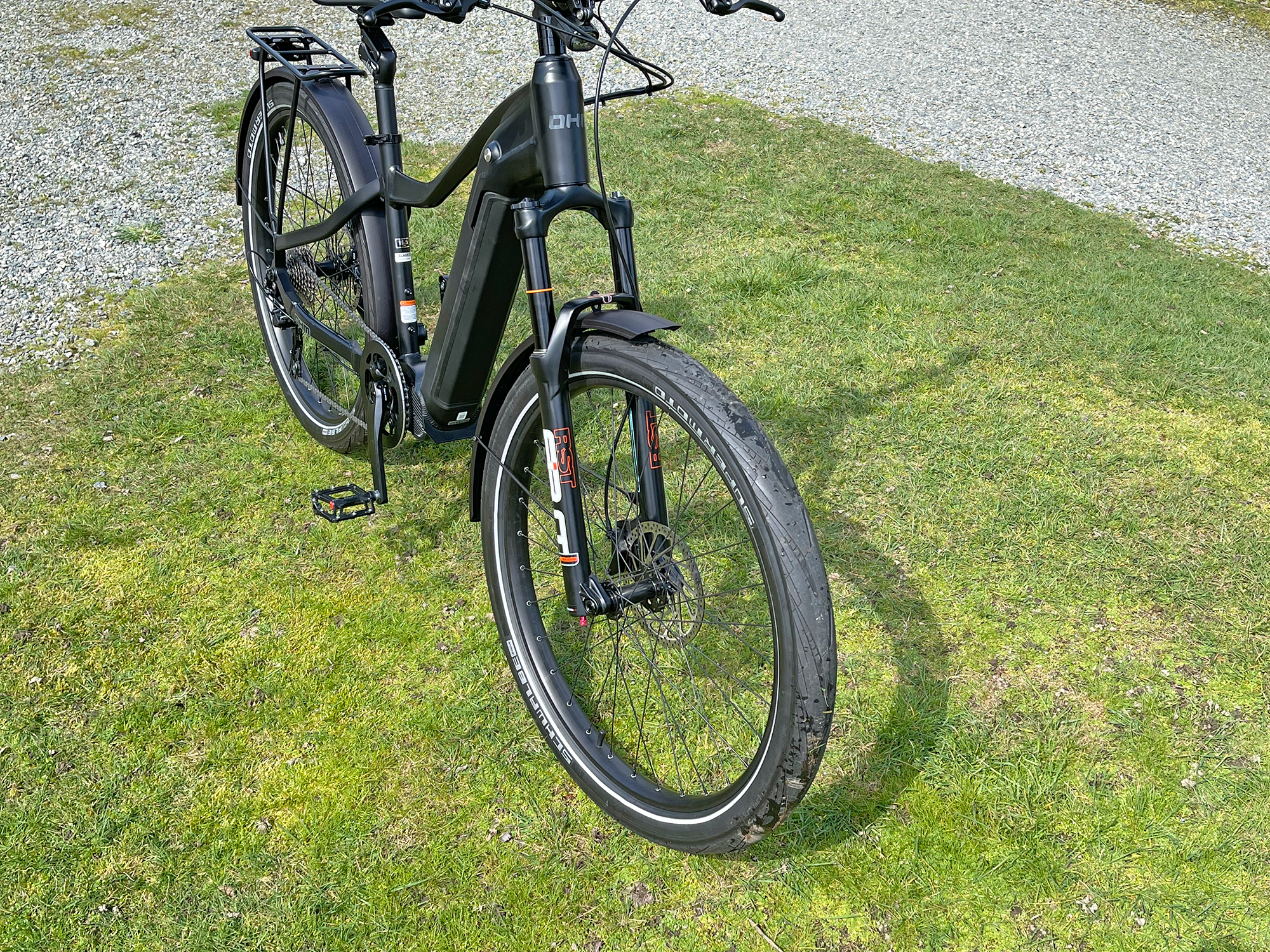
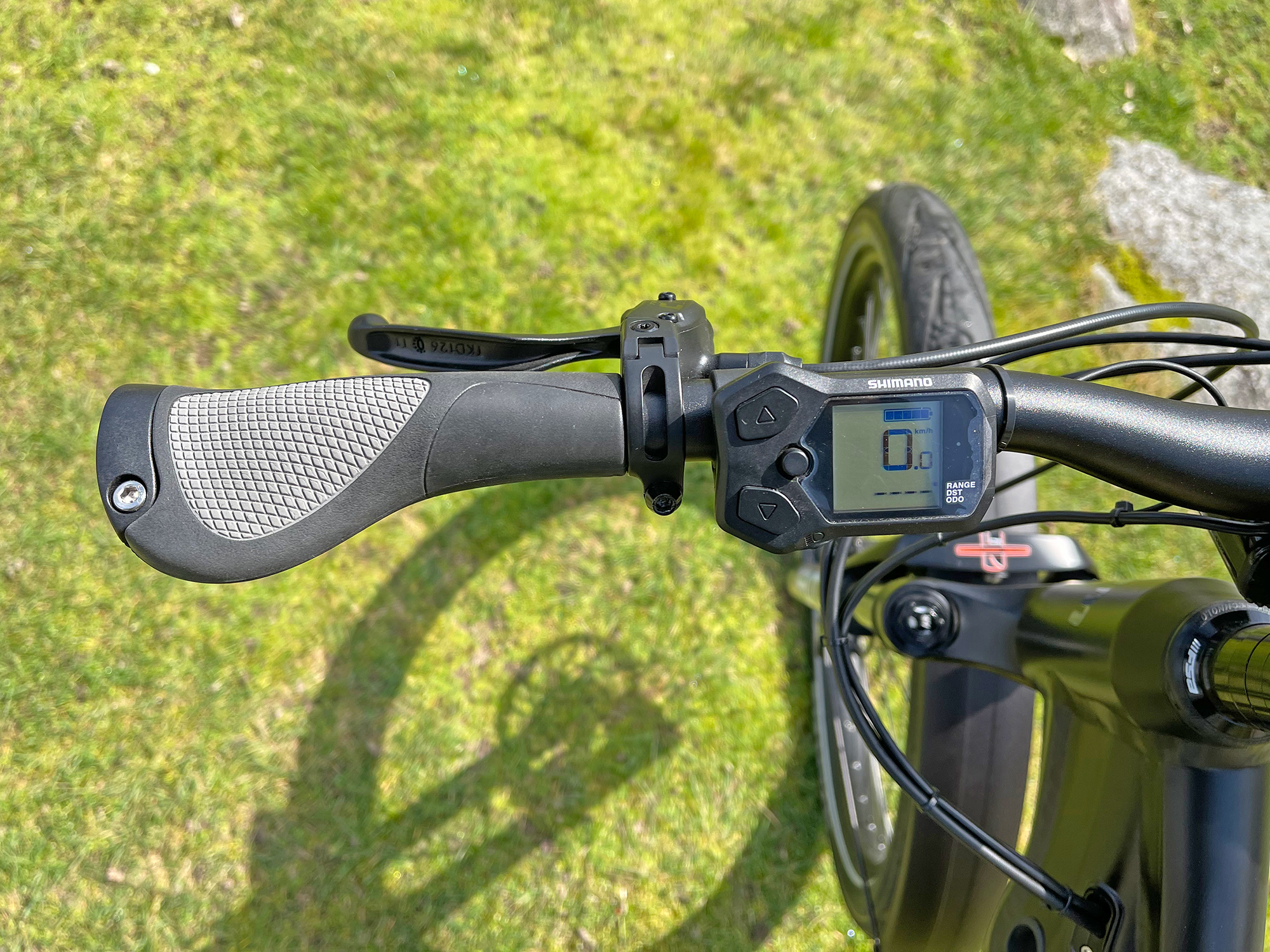
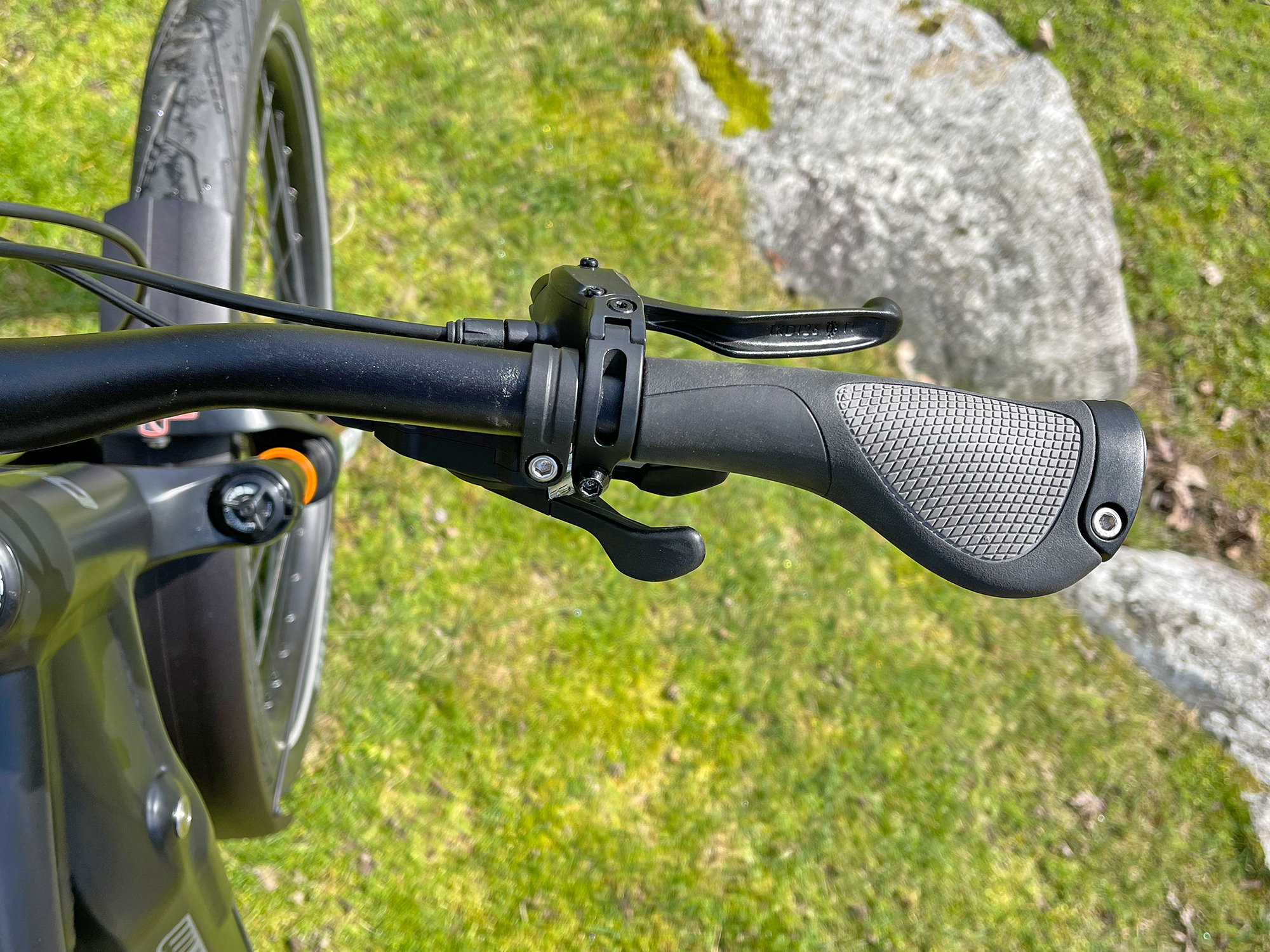

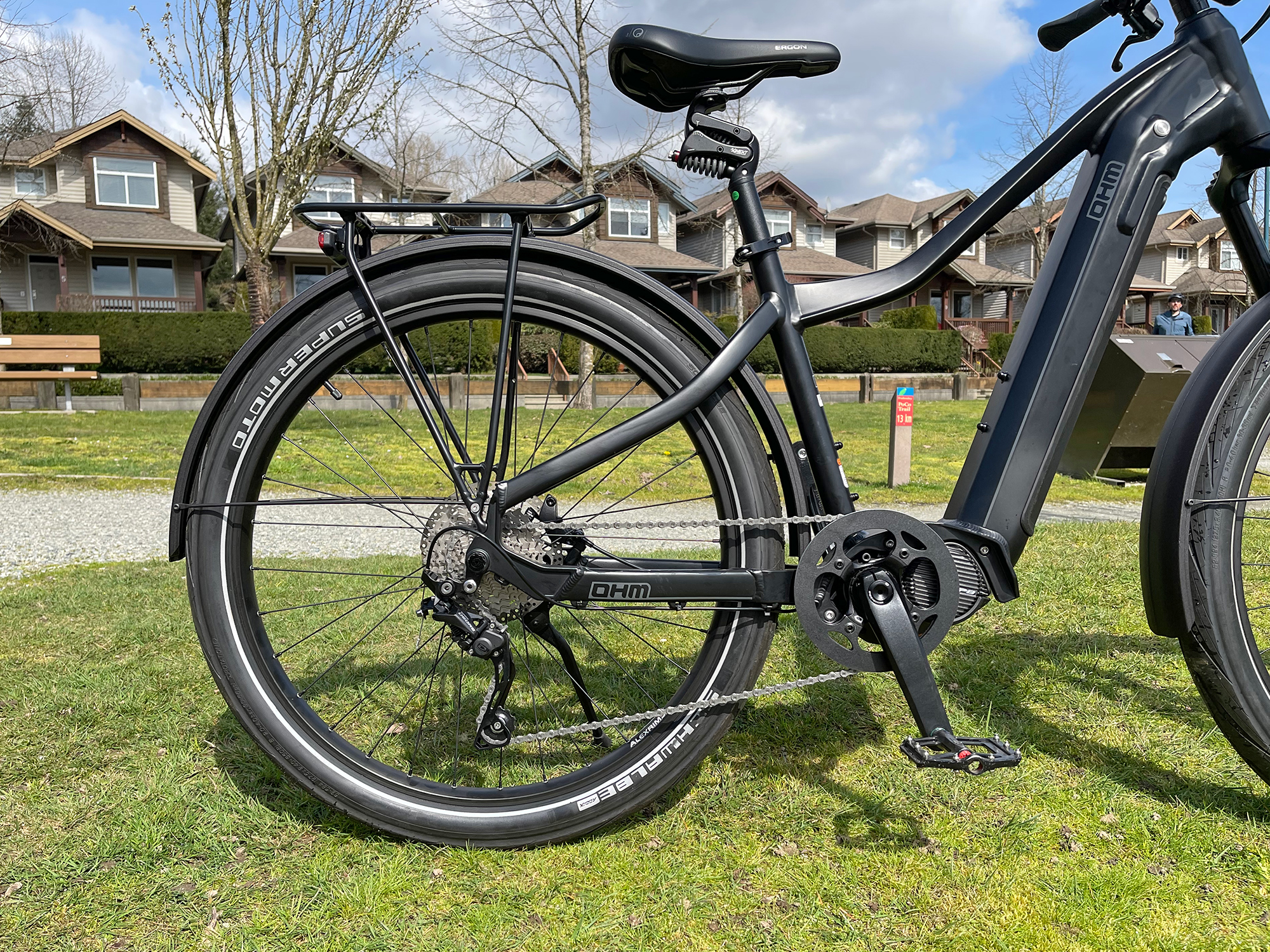
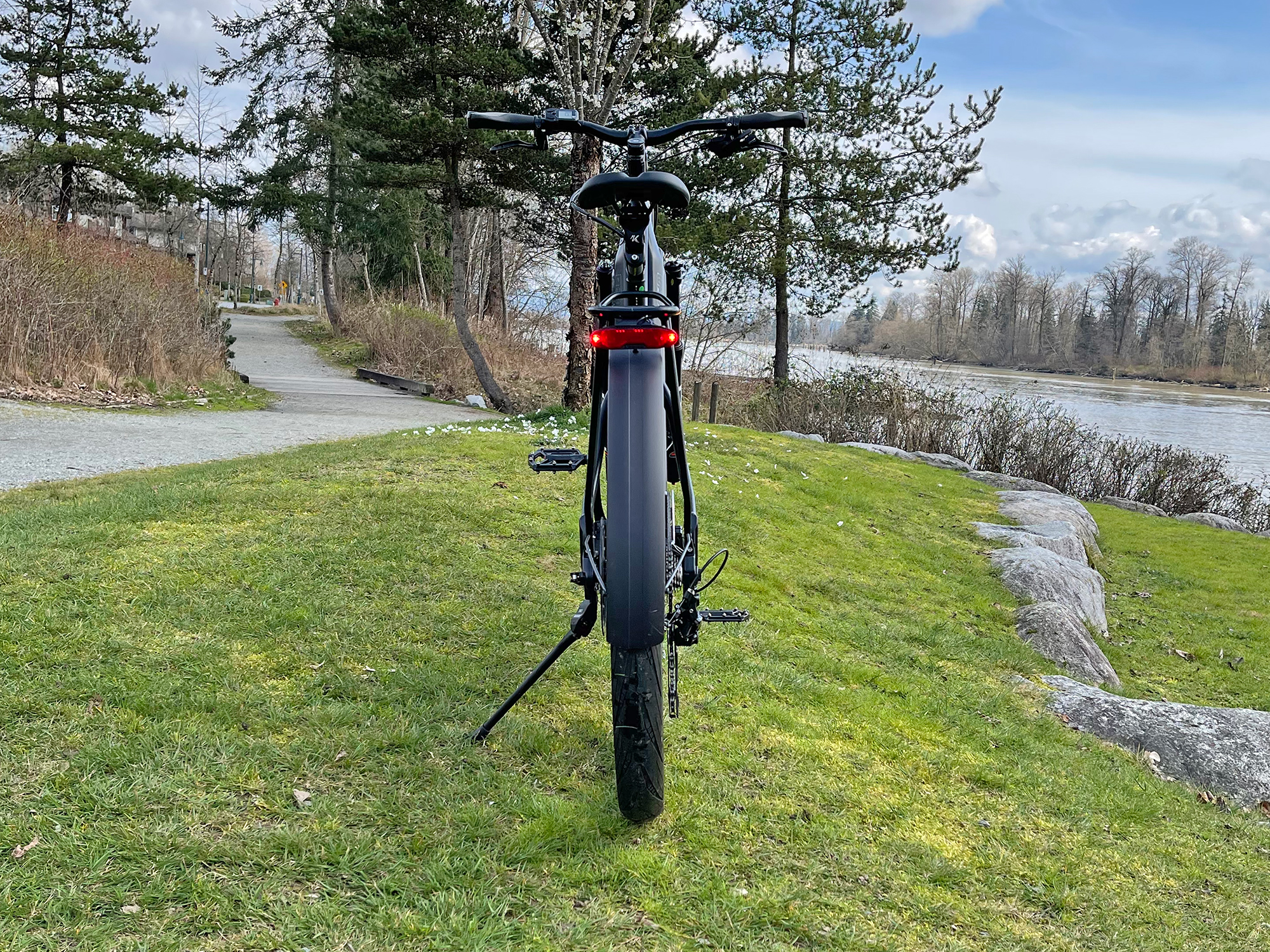
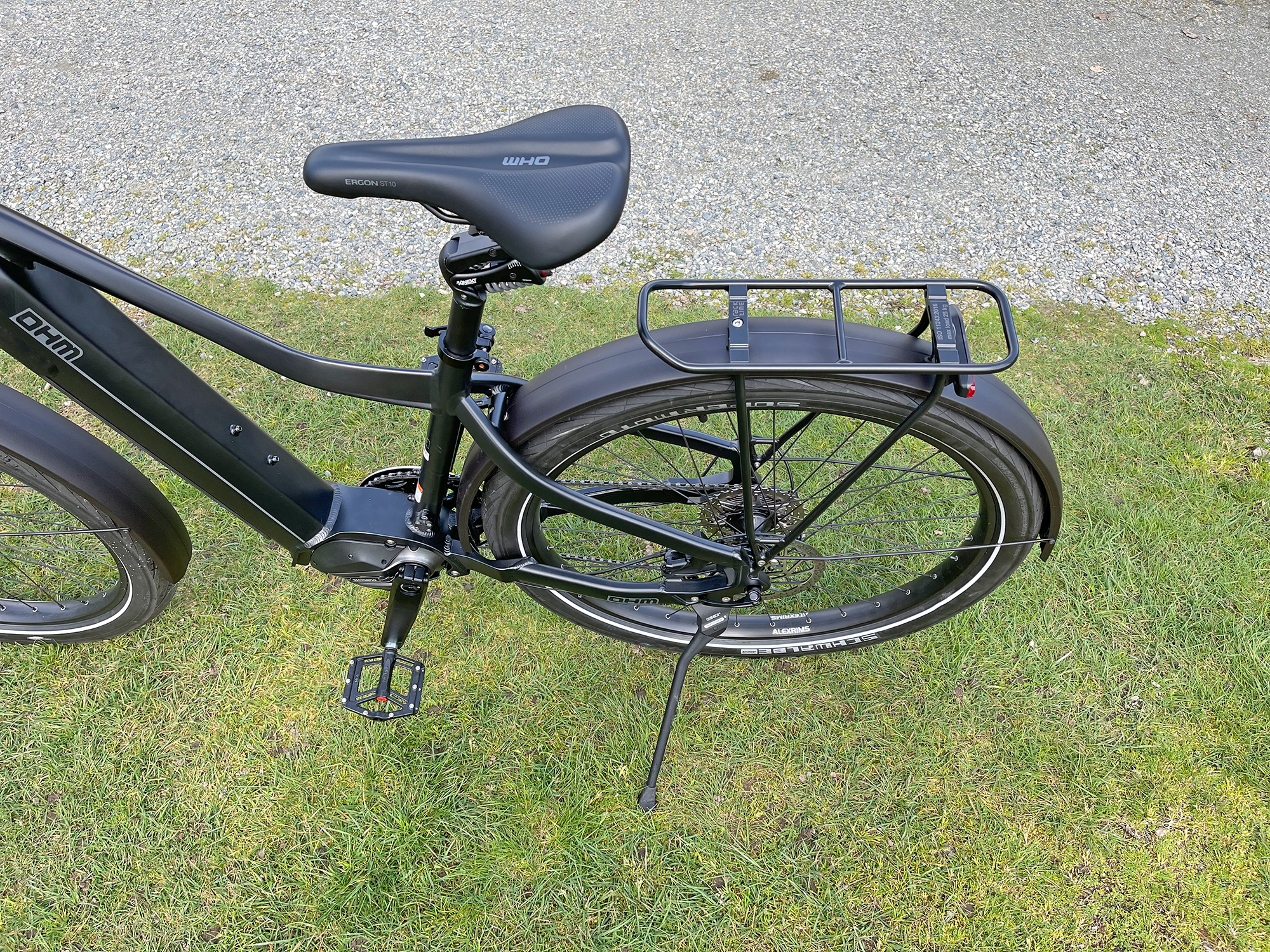
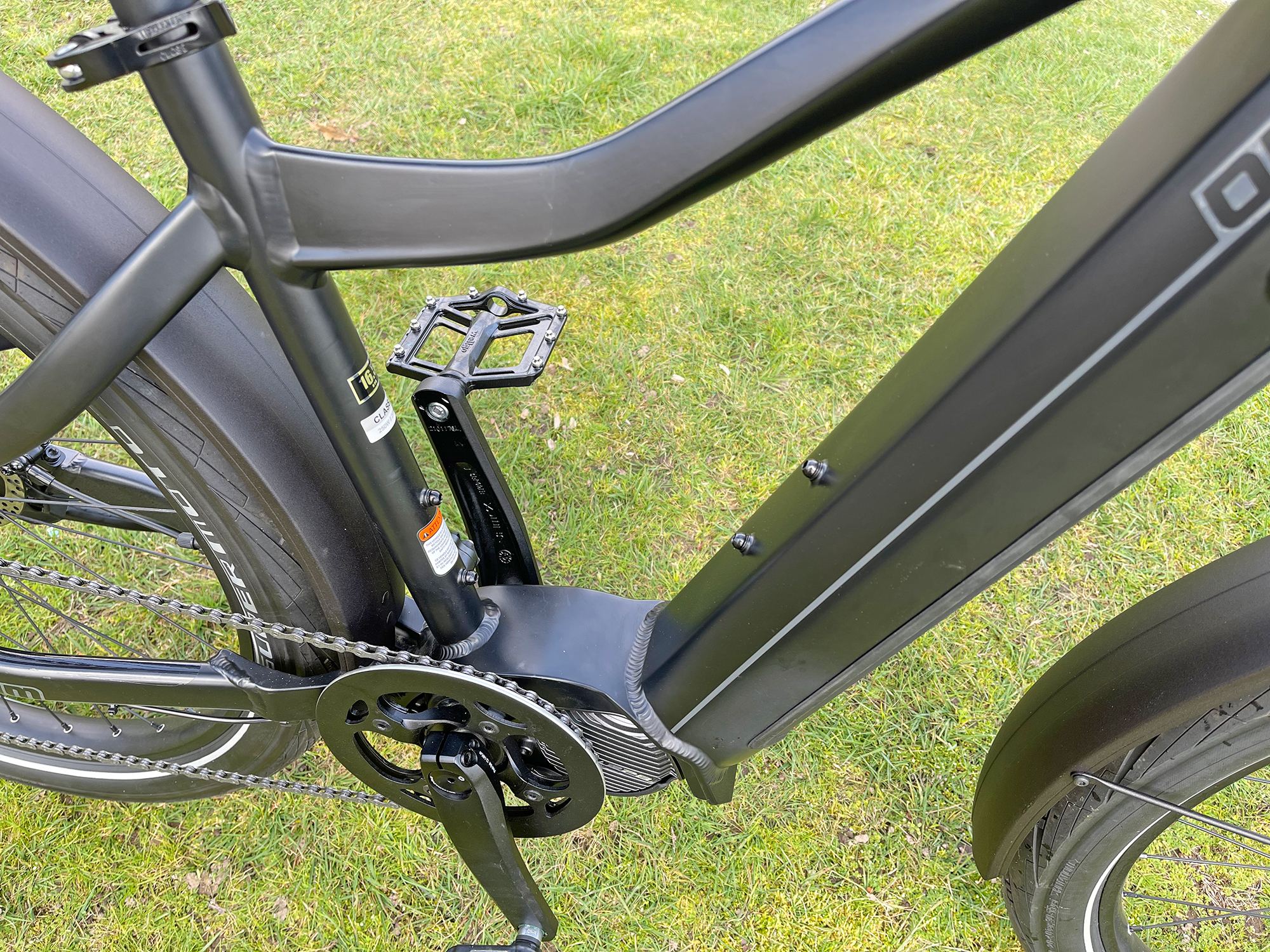

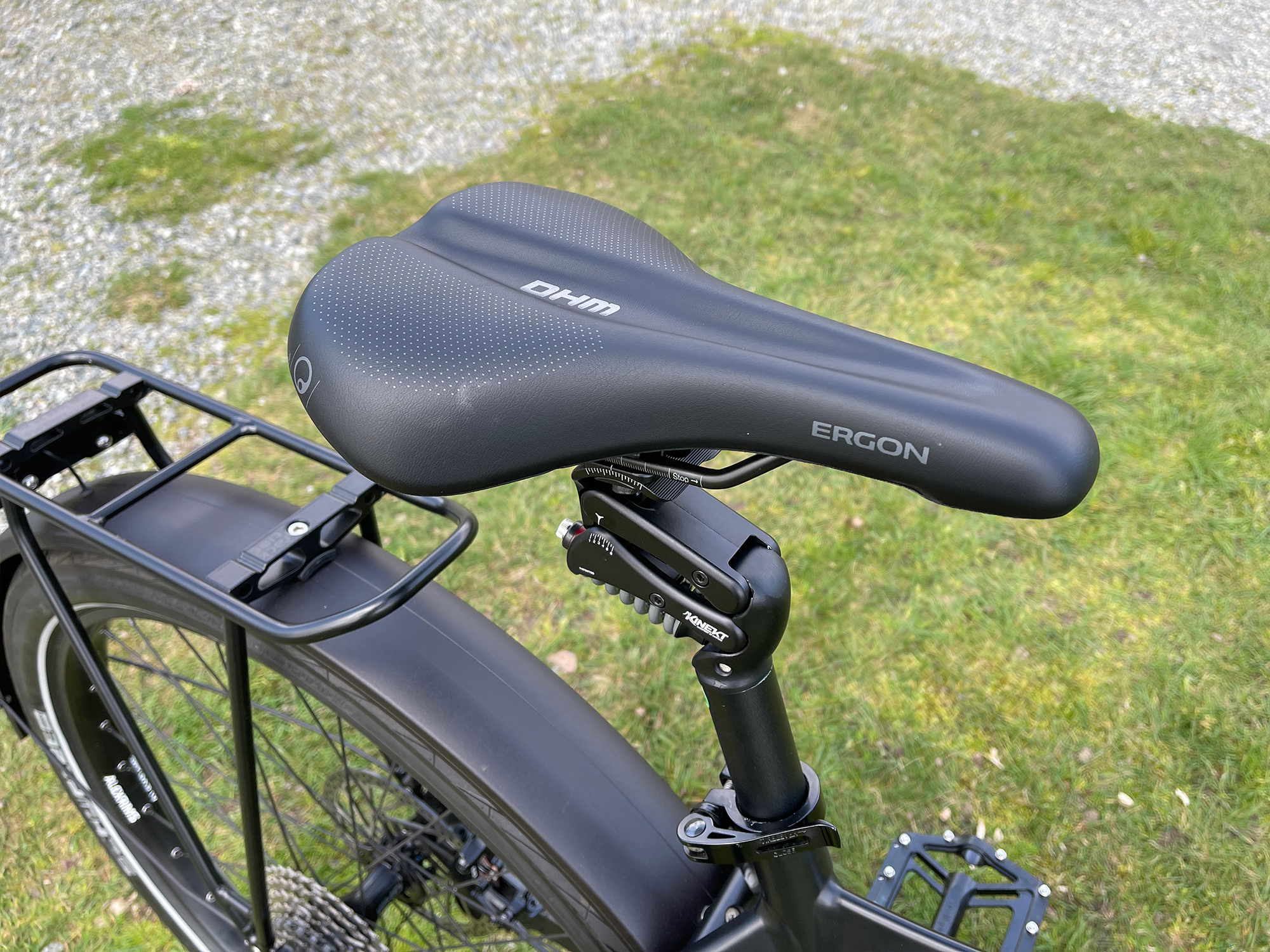
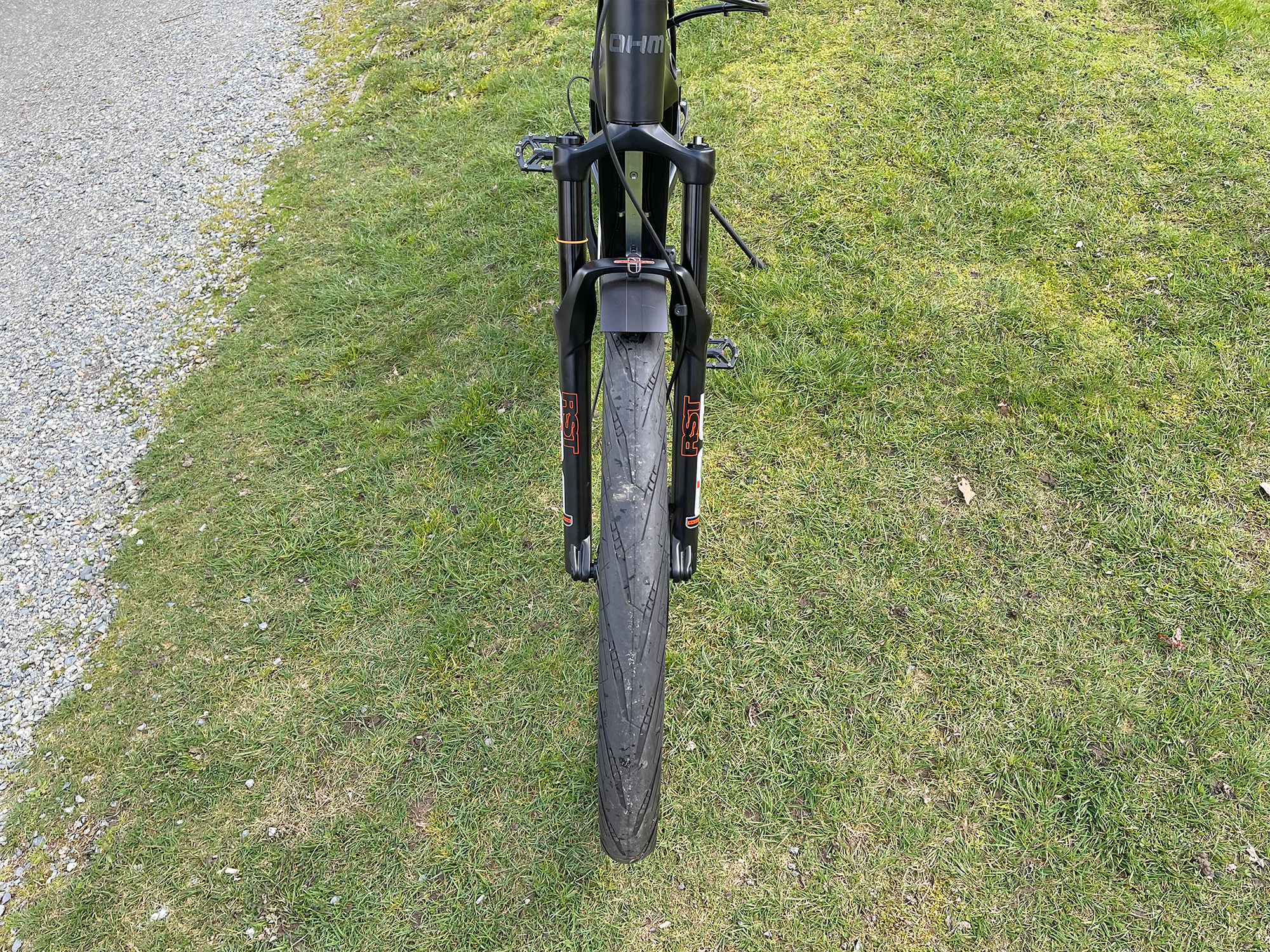
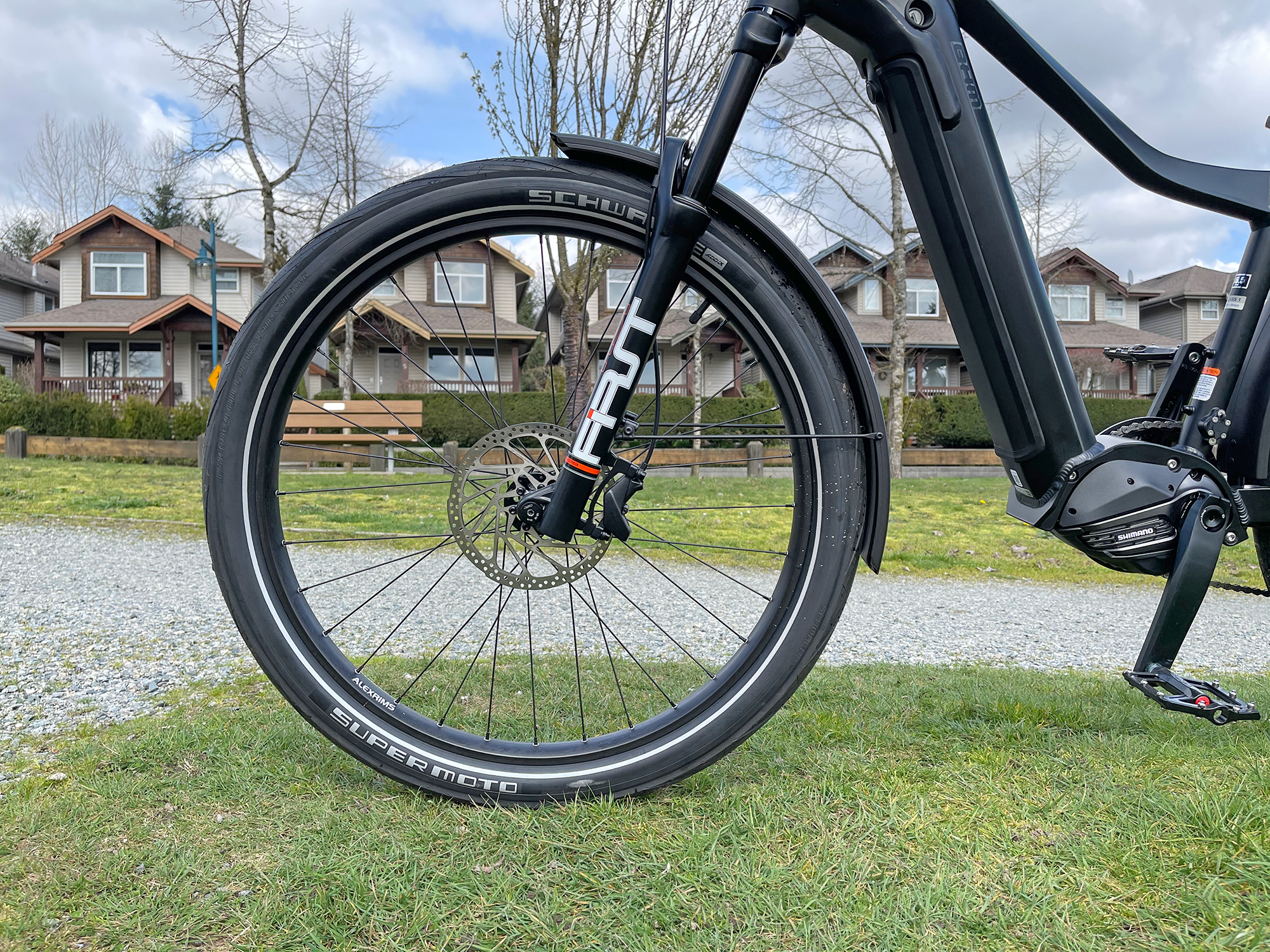


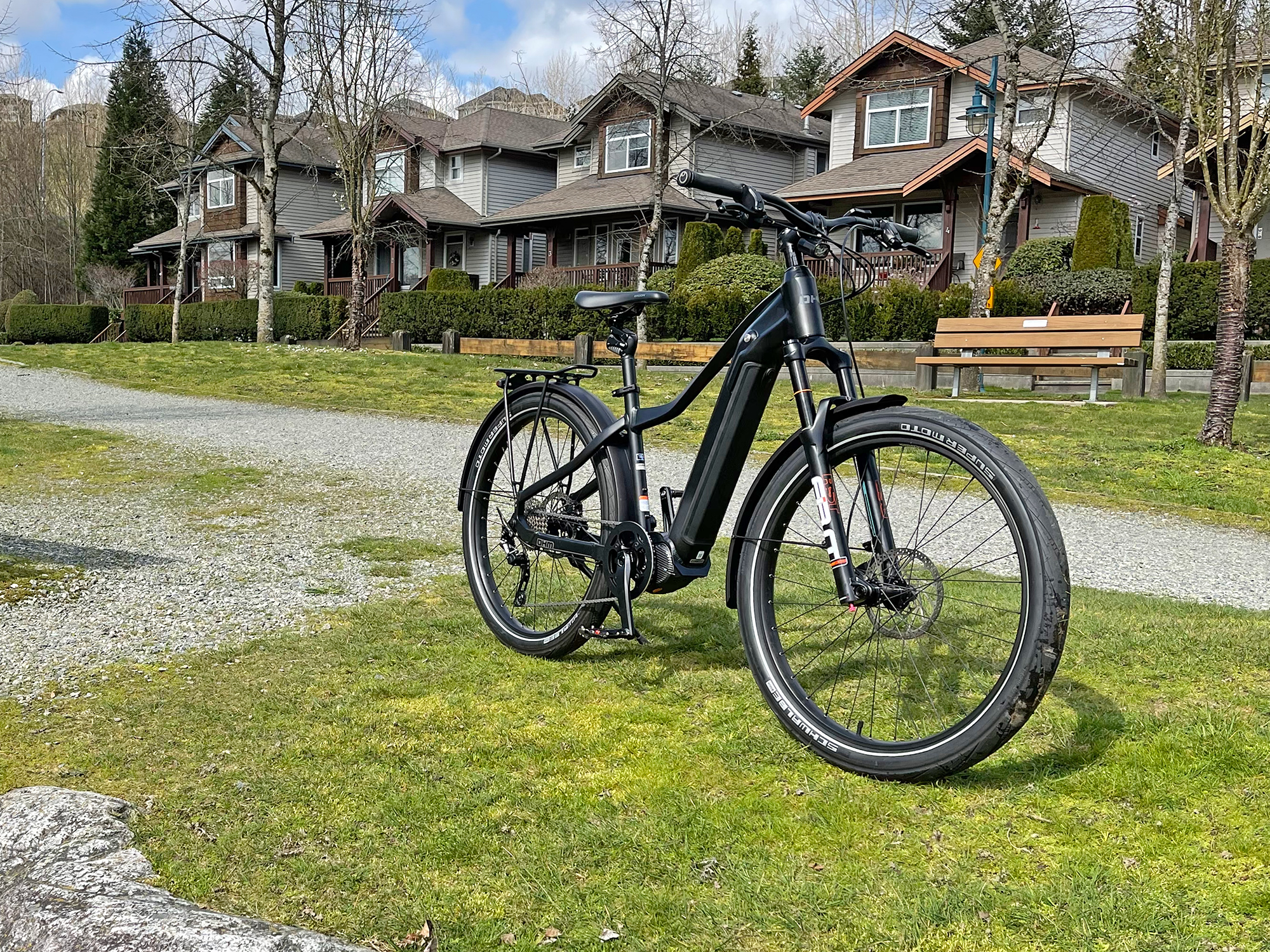
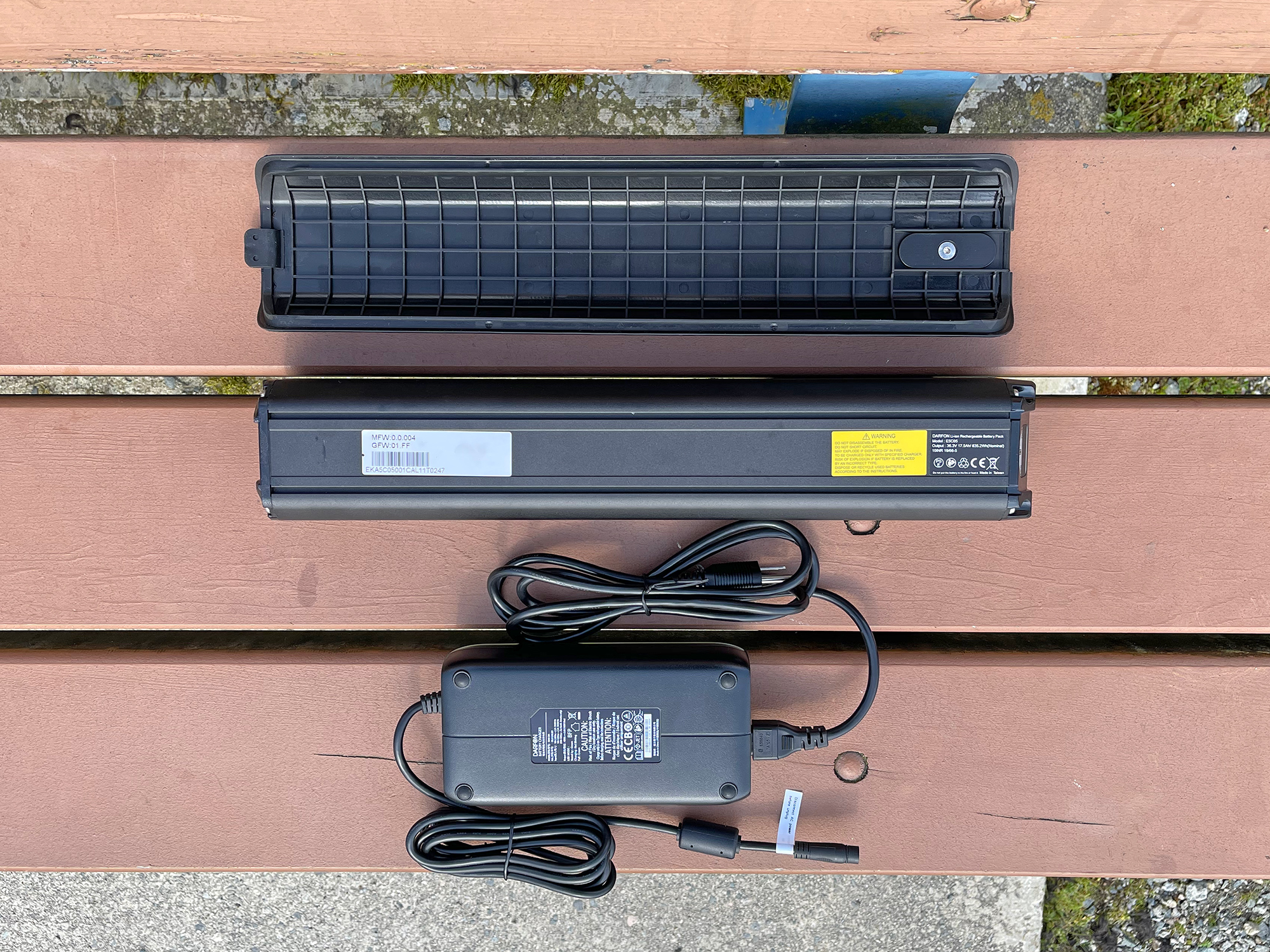
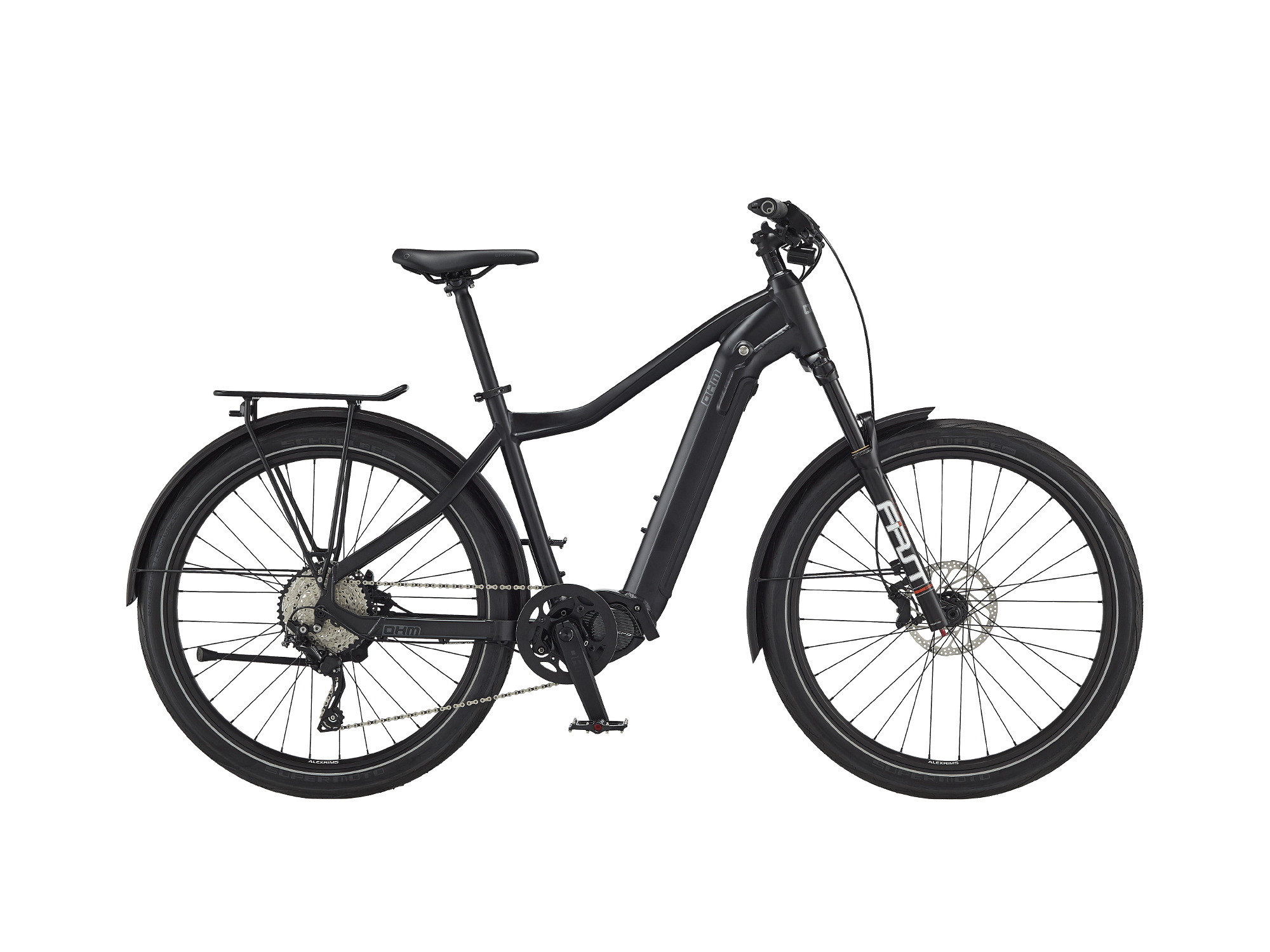

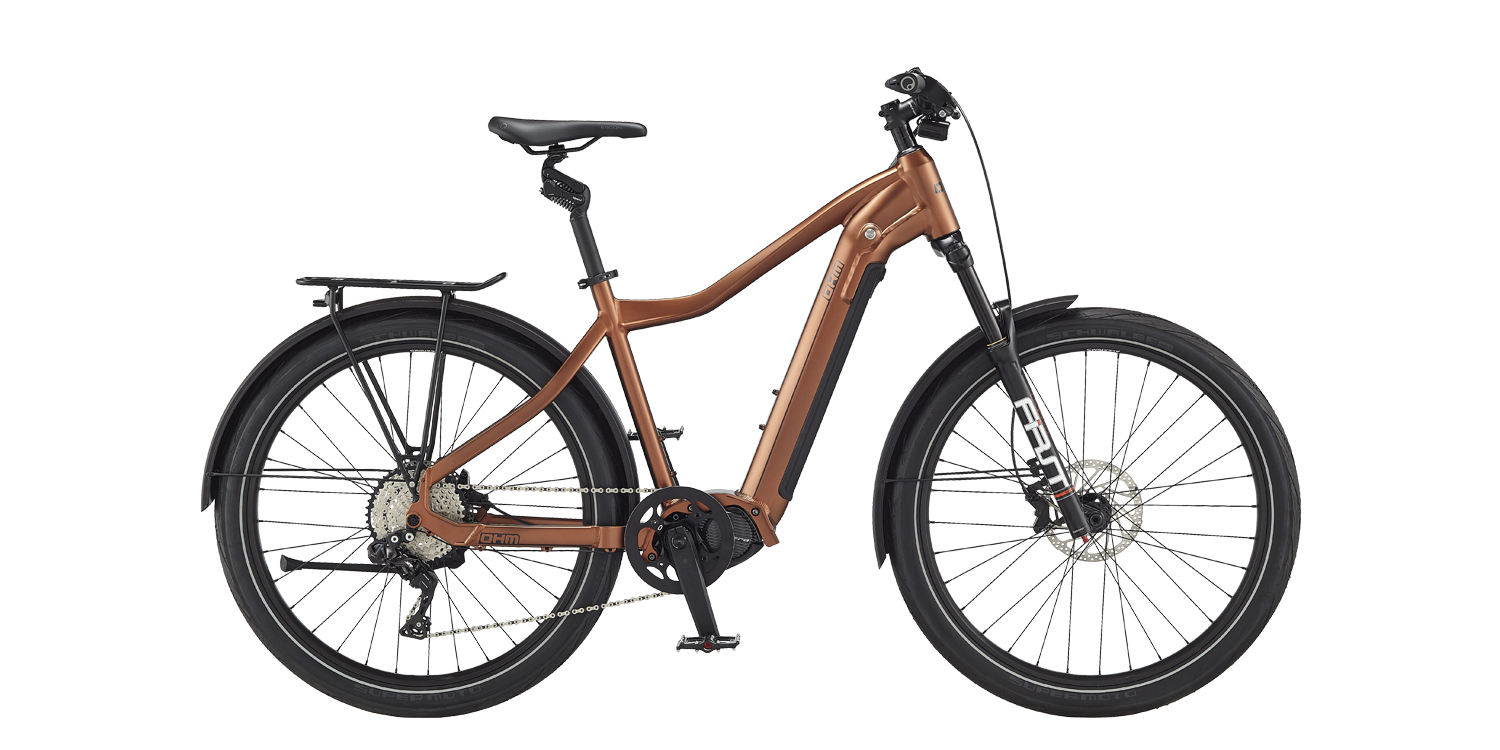
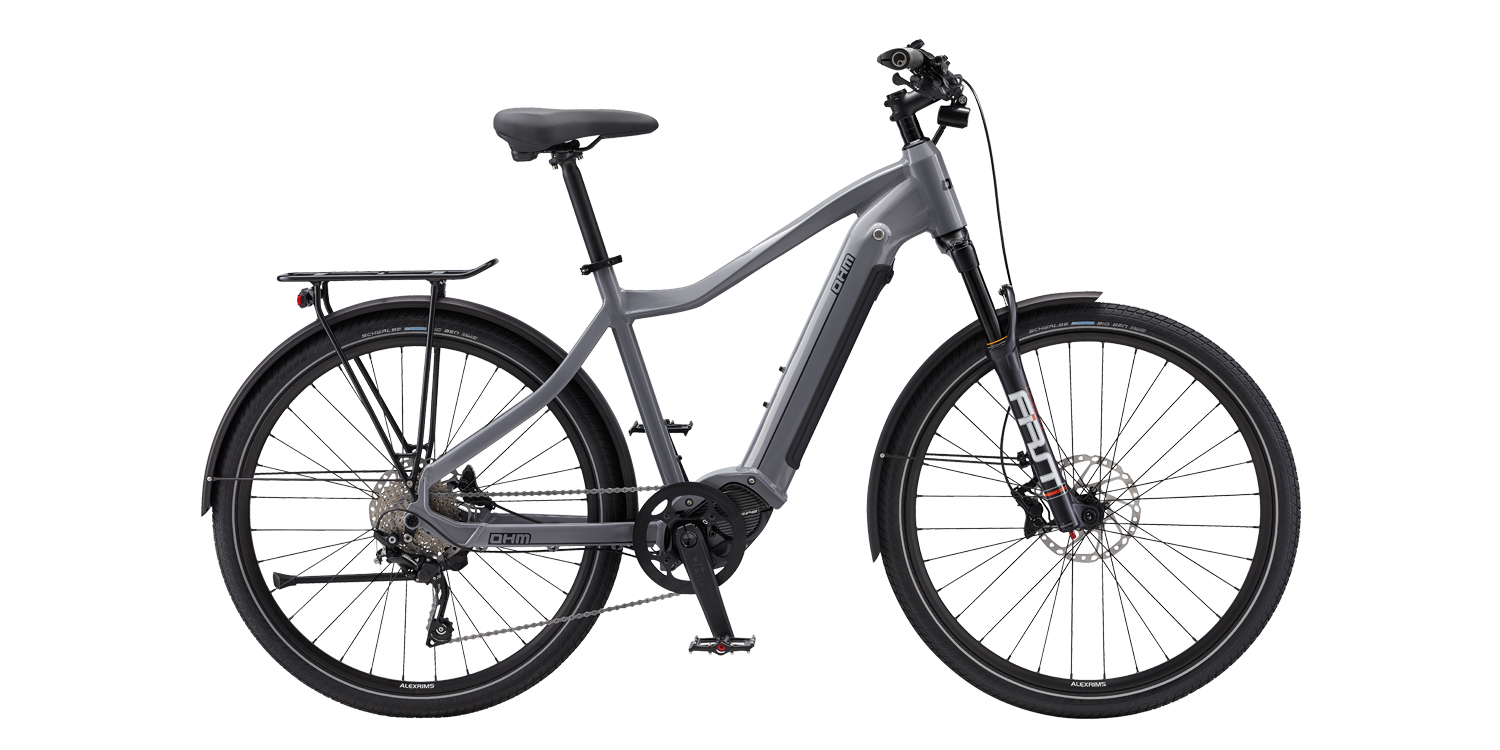
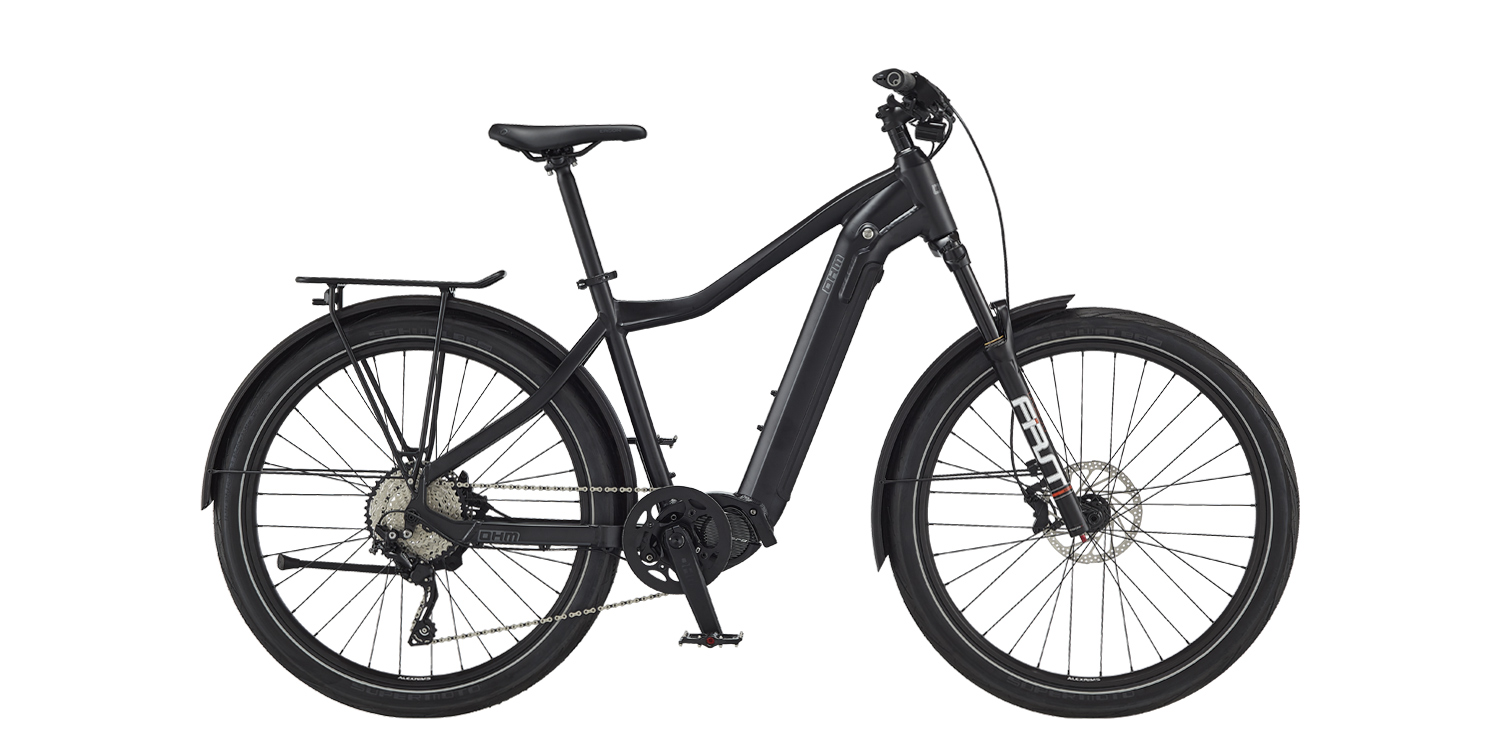

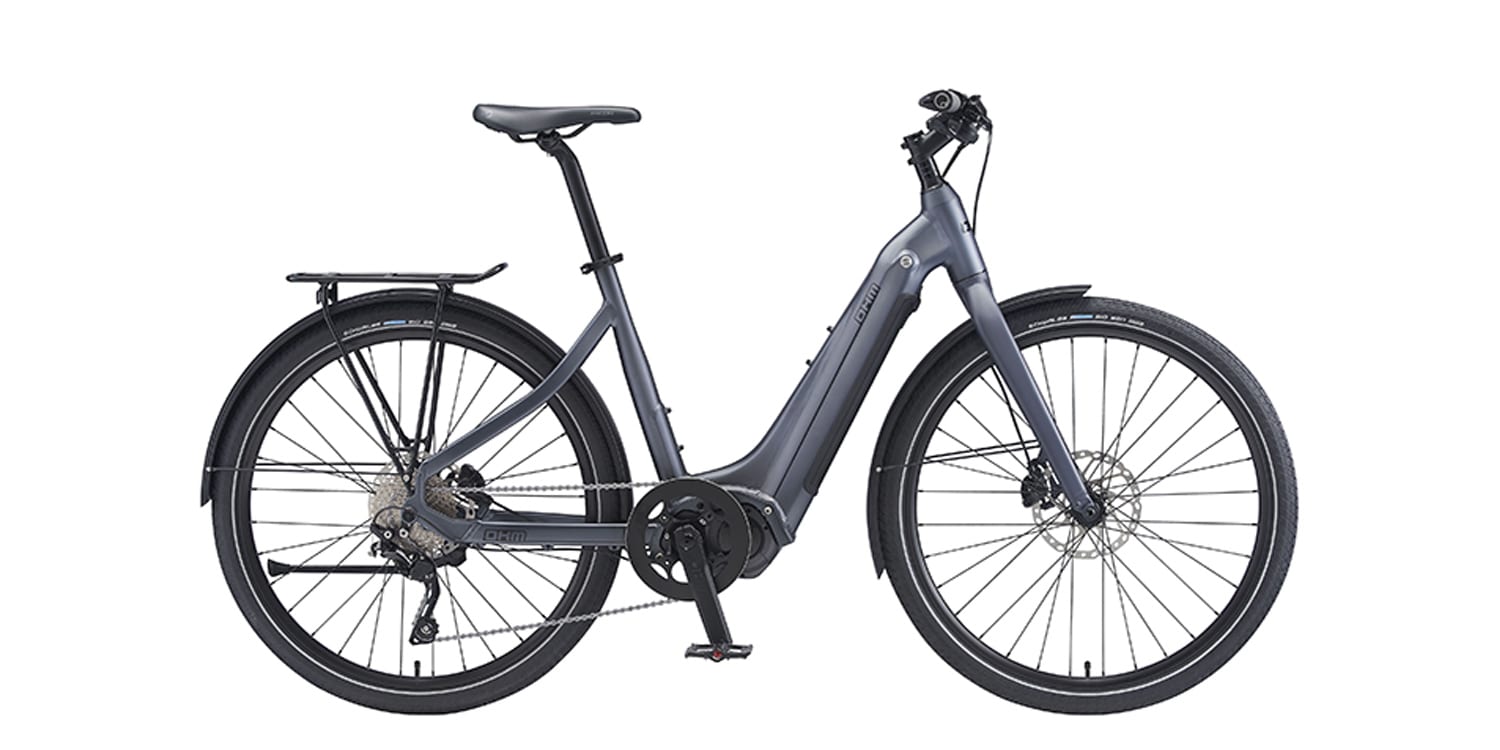
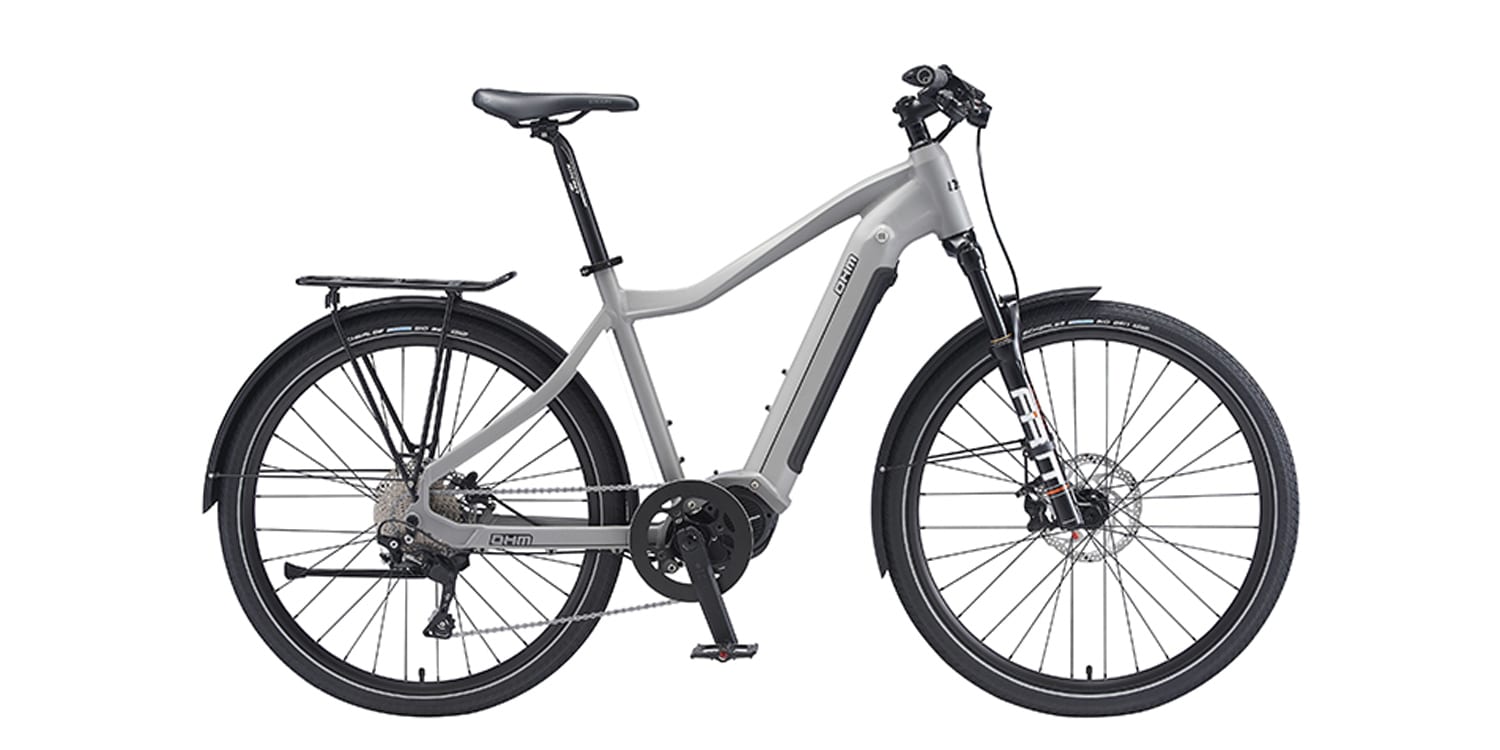
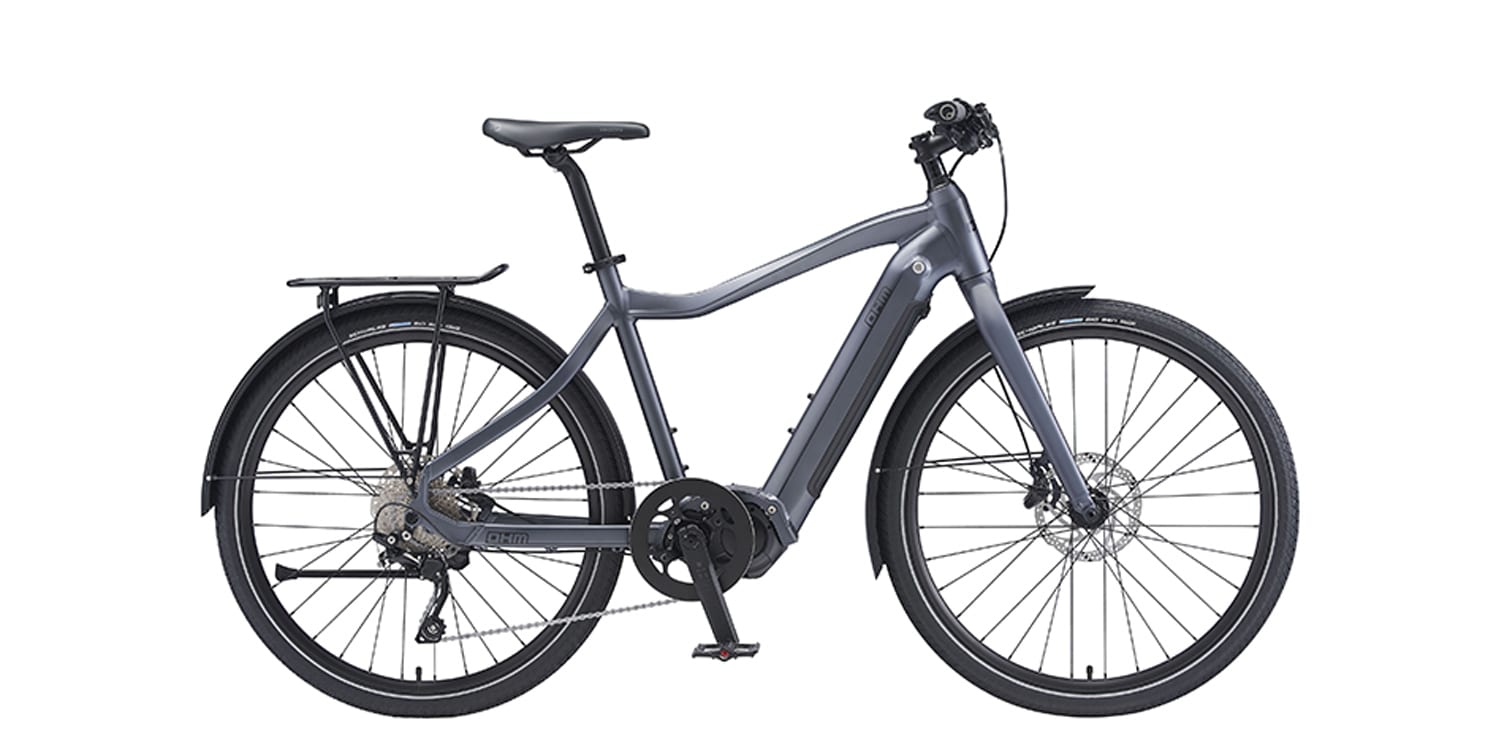
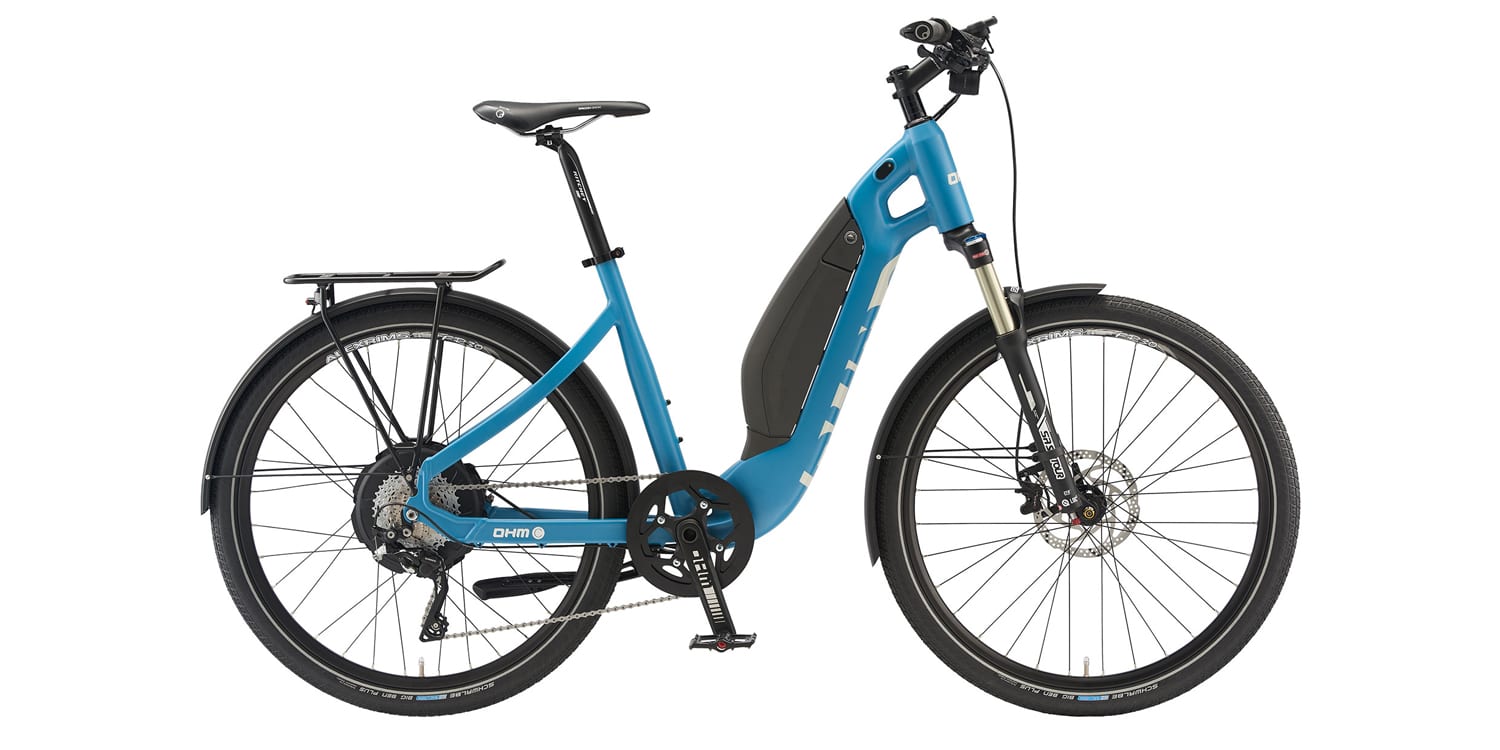
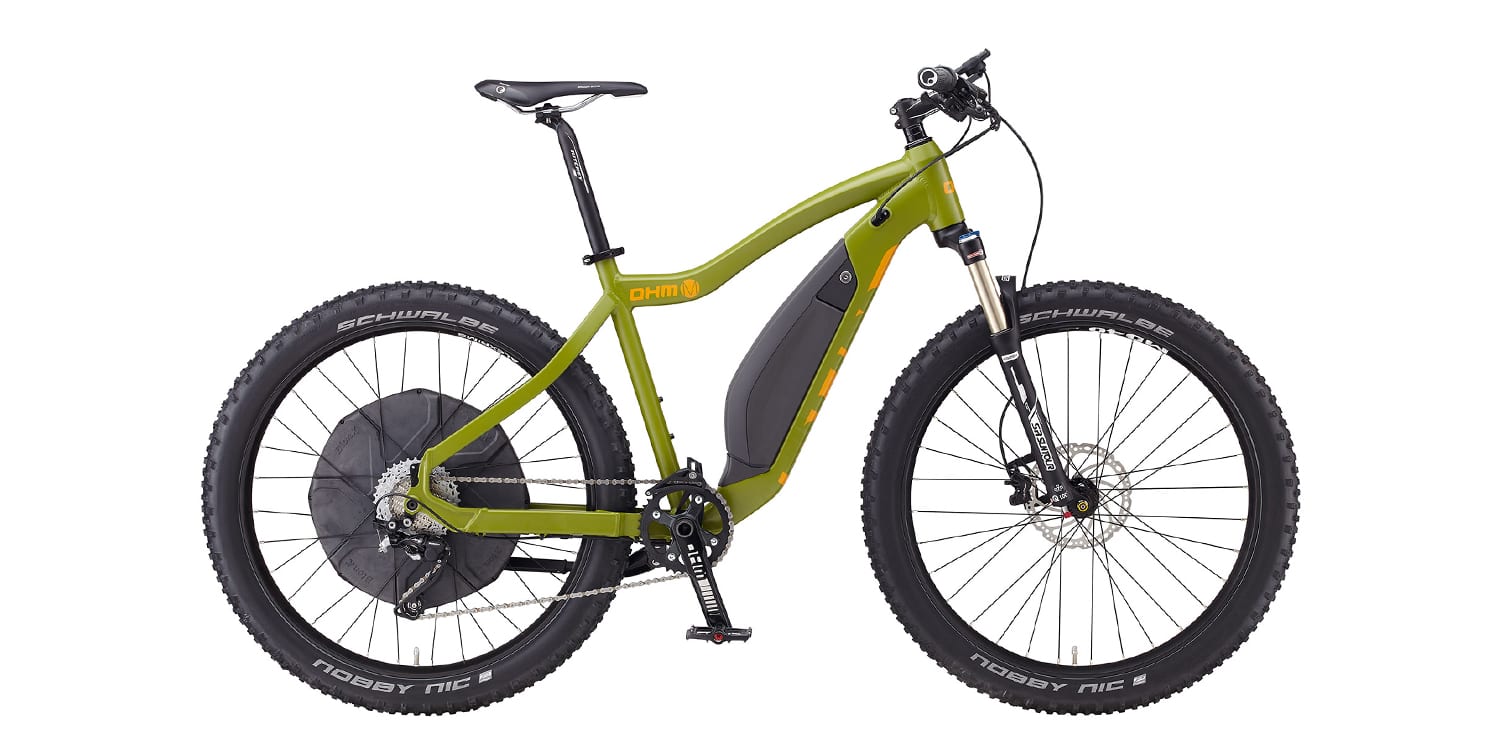
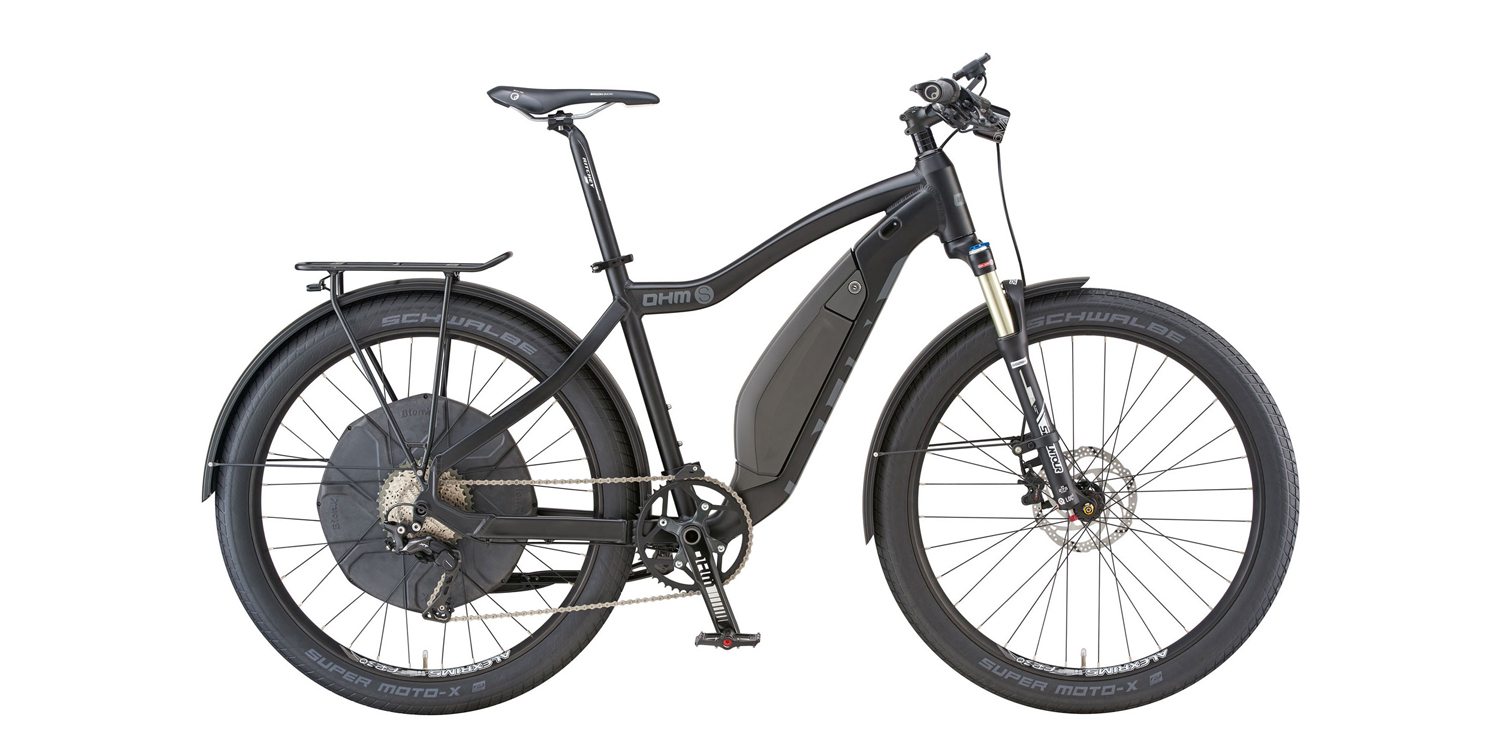
TP says
Looks very much like the Trek Allant 7!
Court says
Yeah, both companies make good products and they do look similar! I suspect that as a design reaches its highest form, it may start to resemble other optimized designs… I see this with cars, where the body styles look similar and the difference becomes colors and supporting business practices like dealers and warranty.